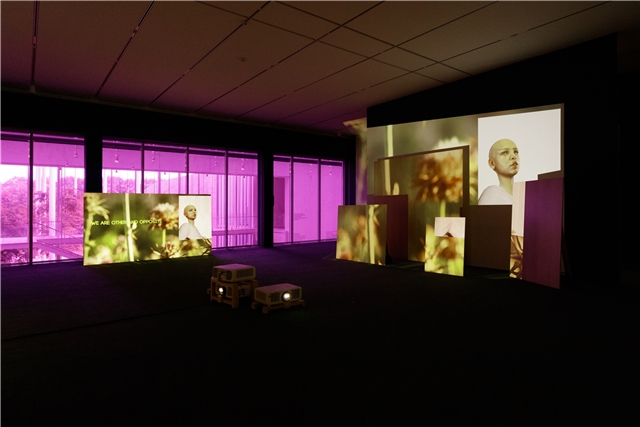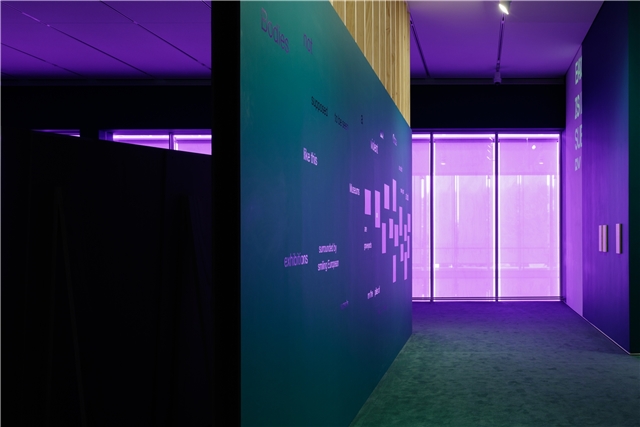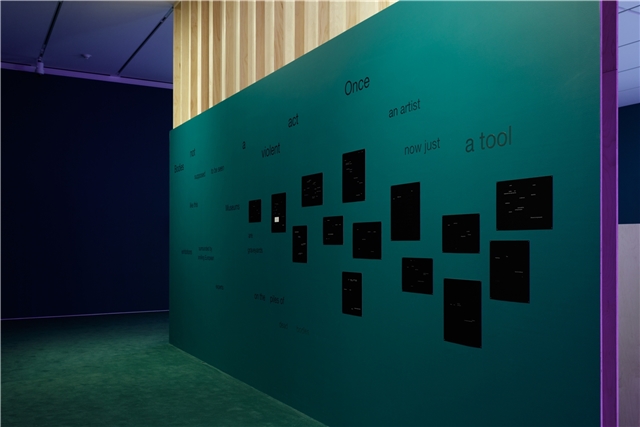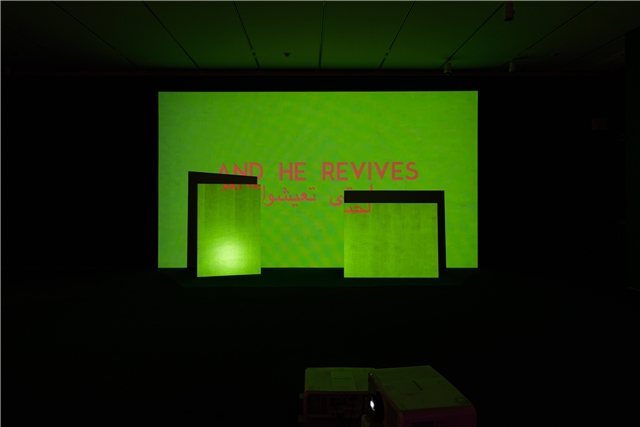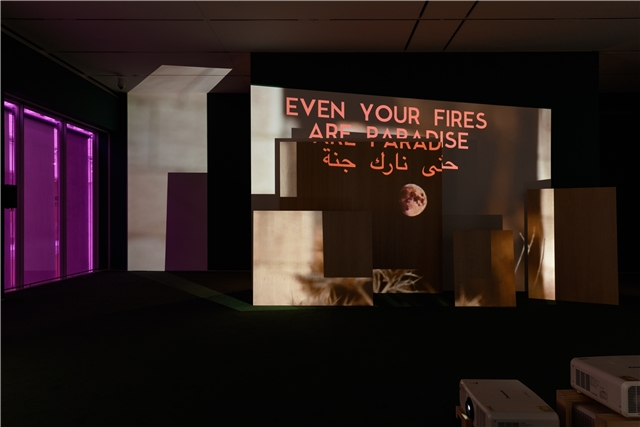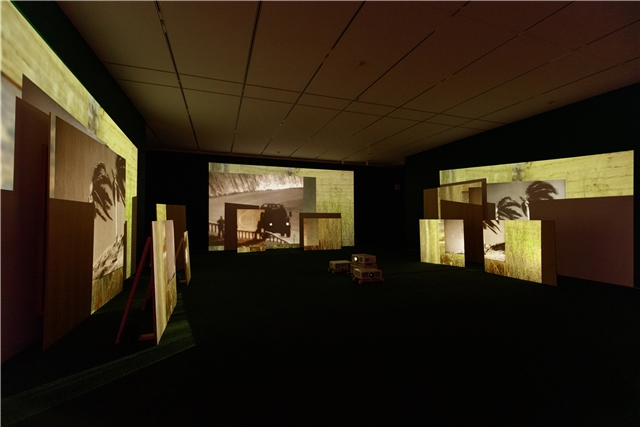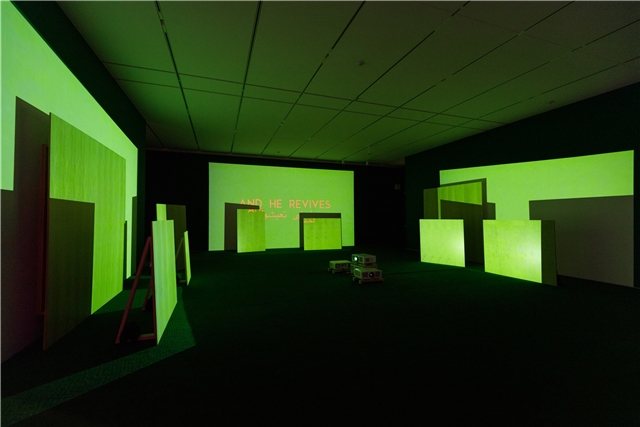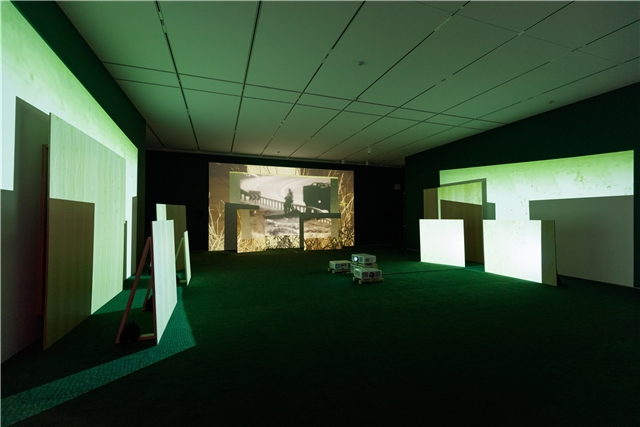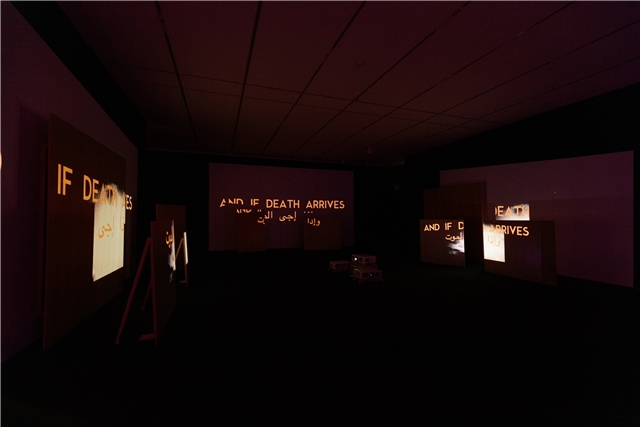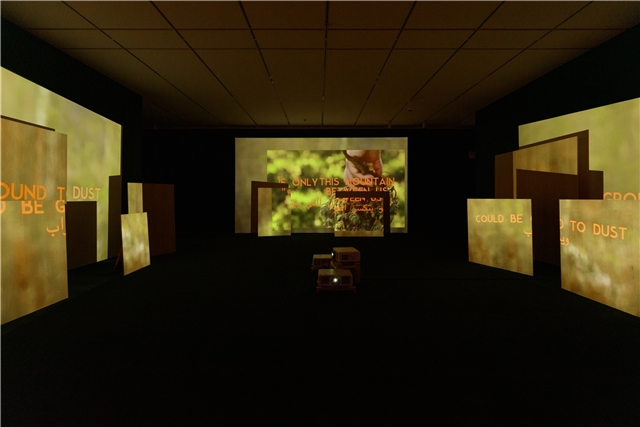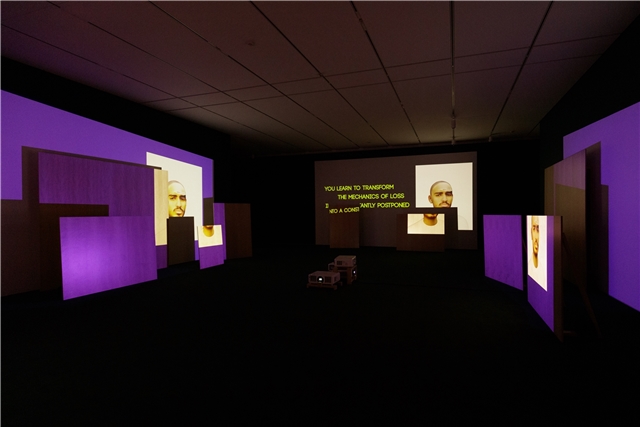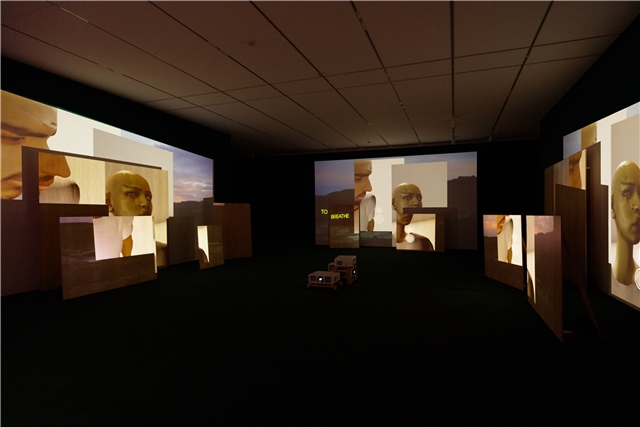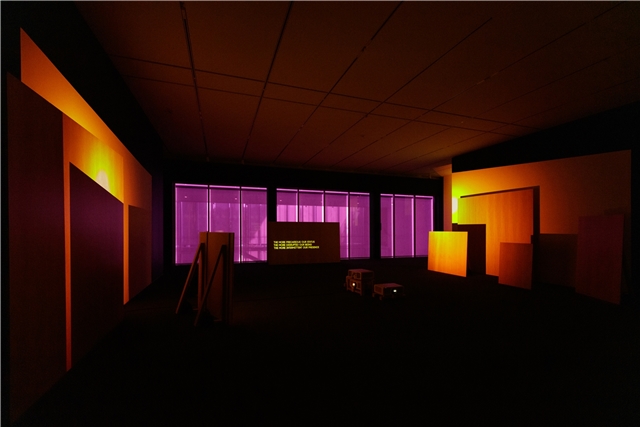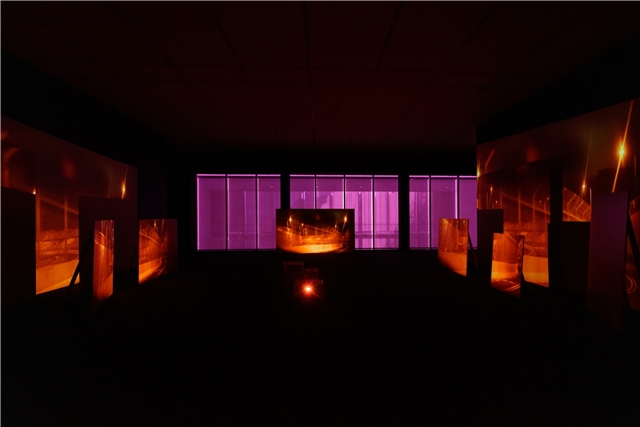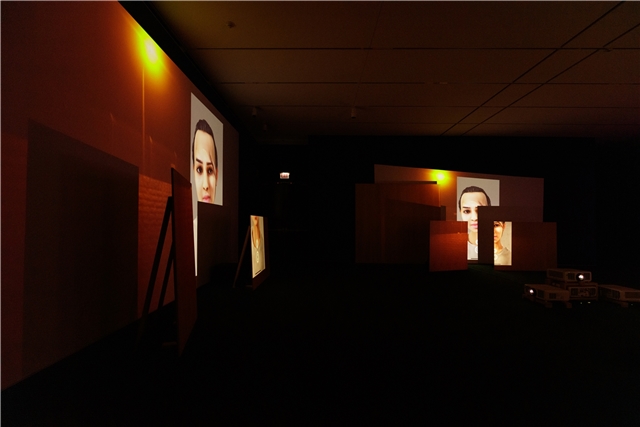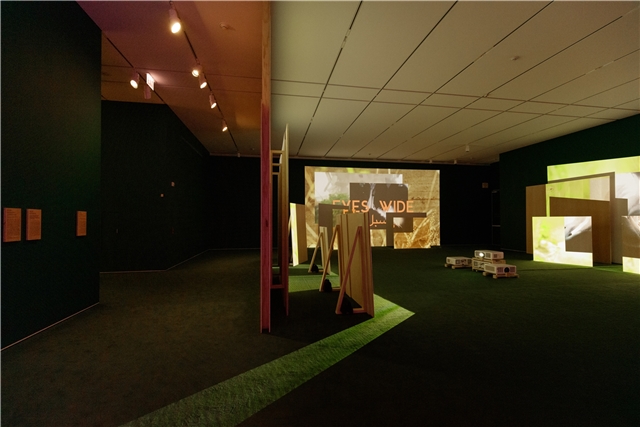Working in film, installation, performance, sound, and text, Abbas and Abou-Rahme sample self-authored and existing media and materials to reframe and activate narratives that they describe as everyday erasures of Palestinian experience as a means of resisting the illusion of one immutable history. The interconnected works in this installation critically examine how bodies, images, language, memories, and narratives exist within contemporary archives, media, and institutions. Often reflecting on ideas of amnesia, erasure, and return within the Palestinian condition, the artists see these artworks as potential tools for the politically oppressed to become unbound from colonial systems.
Central to the exhibition is an immersive multimedia installation combining new versions of two multi-channel video works. Oh shining star testify (2019–21) focuses on CCTV footage taken from a surveillance camera that circulated online after Yusuf Shawamreh, a 14-year-old Palestinian boy, was killed by Israeli forces. The layered footage, sampled from recordings of the event, brings attention to how images that circulate online can offer a testament to historic events, though that testament can be obliterated when the internet becomes oversaturated with imagery. Foregrounding the simultaneous accumulation and disappearance of data and images, the artists make visible how those “uncounted bodies counter their own erasures, appearing on a street, on a link or on a feed.”
The second video, At those terrifying frontiers where the existence and disappearance of people fade into each other (2019–21), uses fragments of Palestinian postcolonial scholar Edward Said’s poem “After the Last Sky” to interrogate what it means to be constructed as an “illegal” person, body, or entity. The text fragments are interspersed with human avatars created from images of demonstrators in the Great March of Return, a series of protests that began in 2018 and advocated for ending a 12-year blockade and returning Palestinians to their ancestral homeland. The avatars, which are rendered with software that represents missing data as glitches, scars, and incomplete facial features, seem to exist between the past and the future.
The exhibition also presents for the first time the series of prints Don’t read poetics in these lines (2010–21). Abbas and Abou-Rahme began producing this work in 2010 by screenshotting and archiving tweets that responded and continue to respond to the Arab revolutions. The selectively erased texts distill the rapid-fire reactions that unfolded on social media, thus standing as a testament to our time and offering a physical counterweight to the internet, which the artists consider an “amnesiac archive.”
Extracted from this archive, Once an artist, now just a tool (2021) was commissioned by the Art Institute and critiques how museums perpetuate the legacies of the colonial apparatus. In repositioning these sampled fragments, the artists assert language’s capacity to challenge systems and histories of power, critically pointing to the shifts that occur between events and discourse.
The exhibition’s visceral and material narratives raise timely and urgent questions about the ways history is constructed and continually obliterated—encouraging viewers to imagine the potential futures that emerge from the immersive sonic and visual environment.



